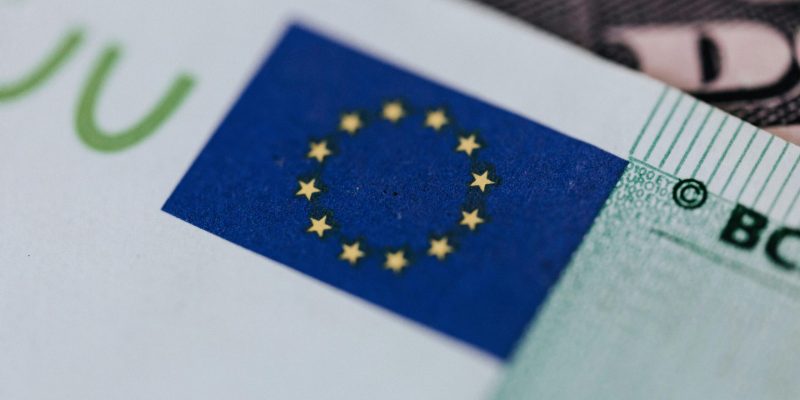
The European Central Bank (ECB) has cut its deposit rate for the fourth time this year, reducing it to 3%.
Starting from a record high of 4% in June, it seems that the ECB is finally close to accomplishing its goal of combatting inflation in the Eurozone, which is now near its 2% target.
However, with growth forecasts continuing to shrink and mounting political uncertainties in France and Germany, ECB President Christine Lagarde has turned her focus to broader systemic issues, questioning whether the eurozone’s problems are self-inflicted.
Additional risks were addressed, mainly due to Donald Trump’s second presidency and how that might affect Europe.
What do the numbers say?
The ECB’s latest forecast projects eurozone growth at just 1.1% in 2025, down from an earlier estimate of 1.3%.
The 2026 outlook has also been revised down to 1.4%. Surveys show slowing activity in the current quarter, with businesses hesitant to invest and consumers reluctant to spend.
Inflation averaged 2.3% in November, higher than in previous months due to rising energy prices.
Despite this, policymakers argue that inflation is on track to meet its target, which might leave more room for easing.
Markets anticipate the ECB will continue cutting rates through mid-2025, potentially lowering the deposit rate to 2%.
The ECB is not alone in its rate cutting path.
The Swiss National Bank (SNB) surprised markets with a half-point cut to 0.5%, responding to currency pressures.
Meanwhile, the US Federal Reserve and other central banks have also adopted dovish stances, reflecting slowing global inflation.
Lagarde’s criticism of France and Germany
At a recent press conference, Lagarde made a pointed critique of the bloc’s largest economies, accusing them of creating “self-inflicted uncertainty.”
Without naming names, she highlighted how political paralysis in Germany and France is complicating the eurozone’s fiscal outlook.
Germany is close to a federal election after its coalition government collapsed, and France’s inability to pass a budget indicates growing political fragmentation.
Lagarde warned that such instability undermines economic recovery, describing the lack of clear fiscal policies as a “complication” for the ECB’s planning.
This dysfunction is particularly damaging given the current economic backdrop.
Lagarde acknowledged that the eurozone economy is “losing momentum,” with 2025 growth forecasts revised down to 1.1%, compared to 1.3% just three months ago.
She also noted that companies are scaling back investments due to weak demand and an unclear outlook.
How will Trump’s policies impact Europe?
The inauguration of Donald Trump in January brings new risks.
His administration’s promise of higher tariffs could hit Europe’s export-driven economy hard.
The manufacturing sector, particularly in Germany, is vulnerable to a potential trade war.
This adds to existing pressures on Europe’s industrial base, which is already struggling with global competition and rising costs.
ECB policymakers acknowledge that these external factors may require a reassessment of their current strategy.
While quarter-point cuts are planned for January and March, a larger half-point cut remains an option if conditions deteriorate further.
Bright spots in a cloudy landscape
It’s not all doom and gloom for Europe. Some eurozone nations are outperforming.
Spain, for example, could rival the US as one of the fastest-growing advanced economies, thanks to a tourism boom, a robust labor market, and green investment initiatives.
Similarly, former crisis-hit countries like Portugal, Ireland, Greece, and Spain—once dubbed the “PIGS”—are now among the region’s most resilient performers.
These nations highlight the potential for targeted reforms and investments to drive growth, even in a challenging environment.
However, their success contrasts sharply with the broader eurozone, where political inertia and structural weaknesses persist.
What needs to change?
Europe’s underperformance compared to the US is perhaps indicative of deeper underlying issues.
Former ECB President Mario Draghi has called for urgent reforms to address these challenges, describing the situation as an “existential challenge” for the EU.
What Europe needs right now is increased investment and a more competitive industrial policy.
Additionally, political will is the missing piece.
Without coordinated fiscal policies and a commitment to reform, the burden falls disproportionately on central banks to support the economy.
Lagarde herself has warned that the ECB cannot act as a “jack-of-all-trades,” urging governments to step up.
Final thoughts
The eurozone faces critical decisions in the coming months.
Rate cuts may buy time, but they cannot resolve the region’s deeper structural and political issues.
With potential tariffs from US and increased internal tensions in Germany and France, Europe is in for a hard time.
Whether it can rise to the occasion will depend not just on central bank interventions but on the political courage to enact meaningful reforms.
Without such action, the region risks falling further behind in an increasingly competitive global economy.
The post ECB rate cuts: will this be enough to revive growth in the Eurozone? appeared first on Invezz









